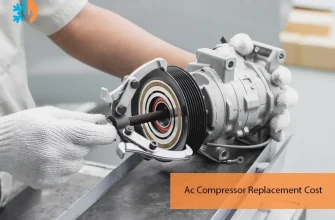When it comes to maintaining optimal engine performance, the oxygen (O2) sensors play a crucial role in ensuring that the air-fuel mixture is just right. These sensors, located upstream and downstream of the catalytic converter, are integral to your vehicle’s emissions control system. However, like any other component, O2 sensors can fail over time, leading to a myriad of issues. In this article, we’ll delve into the key indicators of a faulty O2 sensor and the tests you can perform to diagnose the problem effectively.
Understanding the Role of O2 Sensors
Before diving into diagnostics, it’s essential to understand the function of the O2 sensors:
- Upstream O2 Sensor: Located before the catalytic converter, it measures the level of oxygen in the exhaust gases to determine if the air-fuel mixture is too rich or too lean.
- Downstream O2 Sensor: Positioned after the catalytic converter, it monitors the efficiency of the catalytic converter by measuring the oxygen levels in the exhaust gases post-treatment.
Key Indicators of a Faulty O2 Sensor
When an O2 sensor malfunctions, it can trigger various symptoms. Here are some key indicators to look out for:
- Check Engine Light: This is often the first sign of an issue. An illuminated check engine light could indicate a problem with the O2 sensor, among other issues.
- Poor Fuel Economy: A faulty O2 sensor can lead to an incorrect air-fuel mixture, causing the engine to consume more fuel than necessary.
- Rough Idling: If your vehicle experiences rough idling or stalling, it could be a sign that the O2 sensor is not providing accurate readings.
- Increased Emissions: A malfunctioning O2 sensor can result in higher emissions due to improper combustion, which can affect your vehicle’s environmental impact.
- Exhaust Smoke: If you notice excessive smoke from the exhaust, particularly black smoke, this can indicate an overly rich mixture due to a faulty sensor.
Testing Your O2 Sensors
If you suspect that either the upstream or downstream O2 sensor is faulty, here are some tests you can perform to confirm your suspicions:
1. Visual Inspection
Begin with a thorough visual inspection of the O2 sensors. Look for:
- Wiring damage or corrosion
- Signs of contamination or excessive soot
- Loose or disconnected connectors
2. Diagnostic Trouble Codes (DTCs)
Using an OBD-II scanner, check for any stored trouble codes. Common codes related to O2 sensors include:
- P0131: Upstream O2 sensor circuit low voltage
- P0132: Upstream O2 sensor circuit high voltage
- P0133: Upstream O2 sensor slow response
- P0134: Upstream O2 sensor circuit intermittent
- P0138: Downstream O2 sensor high voltage
3. Voltage and Signal Testing
Using a multimeter, you can check the voltage output of the O2 sensors:
- For the upstream sensor, you should see fluctuating voltage between 0.1 and 0.9 volts as the engine operates.
- The downstream sensor should typically stabilize around 0.5 volts, indicating that it is functioning correctly.
4. Sensor Response Test
A more advanced test involves observing the sensor’s response to changes in the air-fuel mixture:
- Introduce a rich condition (e.g., by spraying carburetor cleaner) and watch for a quick drop in voltage.
- Similarly, lean the mixture and observe for a rise in voltage.
- A sluggish response or no change at all indicates a failing sensor.
Diagnosing a faulty upstream or downstream O2 sensor is crucial for maintaining your vehicle’s performance and efficiency. By being vigilant for key indicators and performing the necessary tests, you can identify issues early, saving you both time and money in the long run. If you’re ever in doubt, it’s advisable to consult with a professional mechanic to ensure accurate diagnostics and repairs.
Maintaining your vehicle’s O2 sensors not only enhances performance but also contributes to a cleaner environment. Stay informed, stay proactive, and keep your engine running smoothly!









The symptoms of a faulty O2 sensor were explained perfectly! I will definitely keep an eye out for these signs in my vehicle.
This article provides a clear and concise overview of O2 sensors and their importance. I learned a lot about how they affect engine performance!
I appreciate the detailed explanation of the upstream and downstream O2 sensors. It really helped me understand their functions better.
Fantastic article! The connection between O2 sensors and fuel economy was particularly enlightening. Thank you for sharing this knowledge!
Great information on diagnosing faulty O2 sensors! The indicators mentioned are very helpful for any car owner.
I found the section on testing O2 sensors very practical. This guide is something every car owner should read to maintain their vehicle.
This article is a must-read for anyone interested in car maintenance. The information about emissions was especially relevant today.
Excellent breakdown of how to identify issues with O2 sensors. I now feel more confident in troubleshooting my car!